If nothing else, Japan where I make my home, is wet. The rainy season lasts from mid-June to the end of July, typhoons regularly lash the archipelago from August to October, and then there are just the banal rainy days. These in themselves were enough to make me long for a waterproof film camera for street photography, and one that has a lot of manual control rather than a disposable one or some of the old waterproof point-and-shoots. So I had always been intrigued by the Nikonos cameras.
Now the Nikonos V might be overkill. It was designed for underwater ocean photography and is watertight to a depth of fifty meters, but if it can handle that, surely it can handle a Tokyo typhoon. And so when I came across a Nikonos V with a 35mm f/2.5 Nikkor lens in excellent condition for a reasonable price, I bought it, and then eagerly waited for it to rain.
And waited. And waited some more.
Looking at the weather forecast, there were nothing but sunny days ahead, but I still wanted see what my Nikonos could do, and so I took it out with me to shoot—while cycling—albeit in great weather—on dry land.
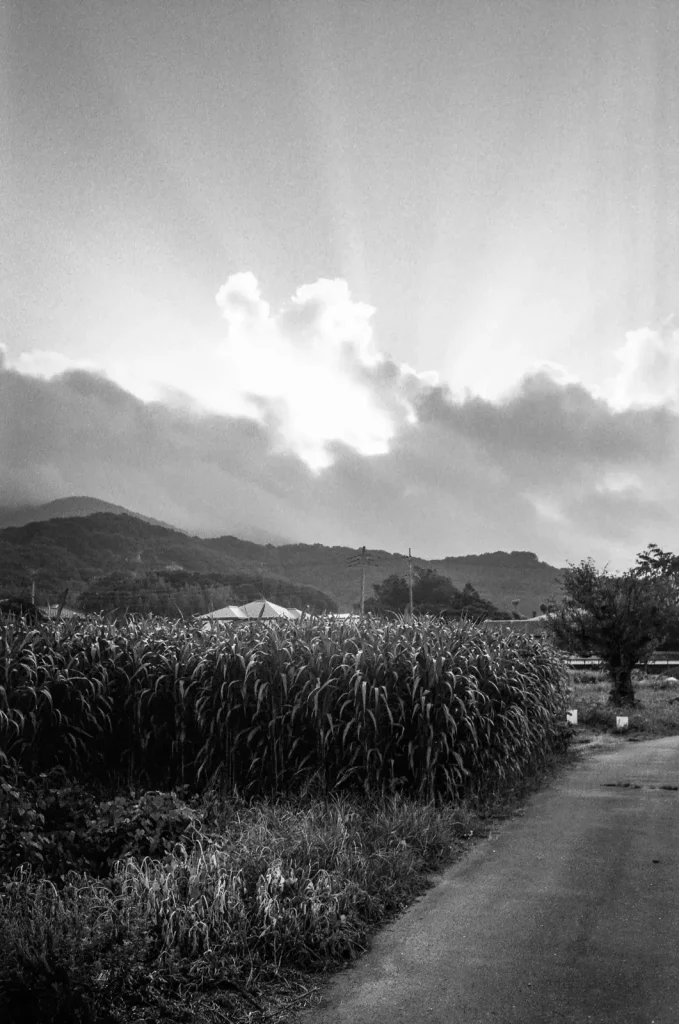
The unwieldy appearance of the Nikonos V is deceptive. Far from awkward, handling the Nikonos V is a wonderful experience. It is easy to grip and shoot even with one hand. It does not slip, and this is not surprising as the camera was designed for divers who might be wearing neoprene gloves. The finder is enormous, bright, and clear. No problem even if you are wearing glasses, as the finder was designed for use with a diving mask.
The Nikonos V looks as if it would be quite heavy, but in fact it weighs just under 900 grams, a bit less than my Leica M3 with 35mm Summicron and a Leicameter which weighs in at 930 grams. As for size, it is not much larger than a Nikon FE.
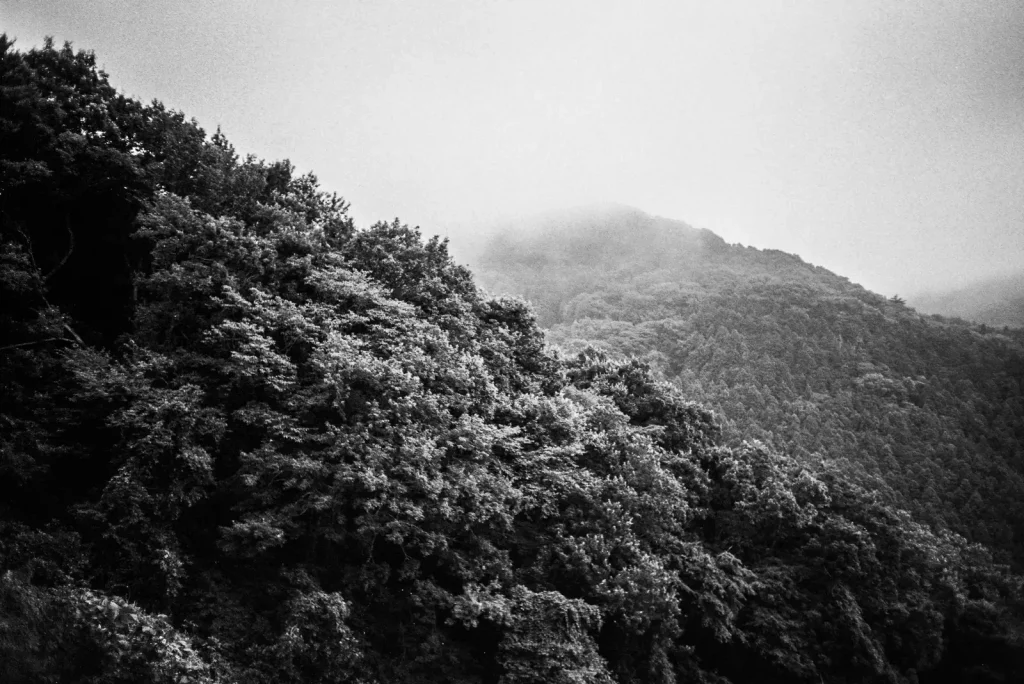
Shooting Nikonos V is fast and quiet, much like the Leica M3. The Nikonos V is mirrorless. When you release the shutter, the response is immediate. There is no mirror to move out of the way of the film or silly autofocus lag and no mirror slap either. The shutter sound is further dampened by the tough body casing.
With the Nikonos, you have to zone focus. The finder merely shows approximate framing, with some marking to help compensate for parallax for close-up shots. The lens is designed to help with zone focusing. As you adjust aperture, two red tabs on the dial of the front of the lens indicate depth of field, similar to the Schneider lenses made for Kodak Retina Reflex cameras. So you set the focus in advance and you can only check your settings by looking at the front of the lens. One half the dial indicates aperture and the opposite half indicates focus range.
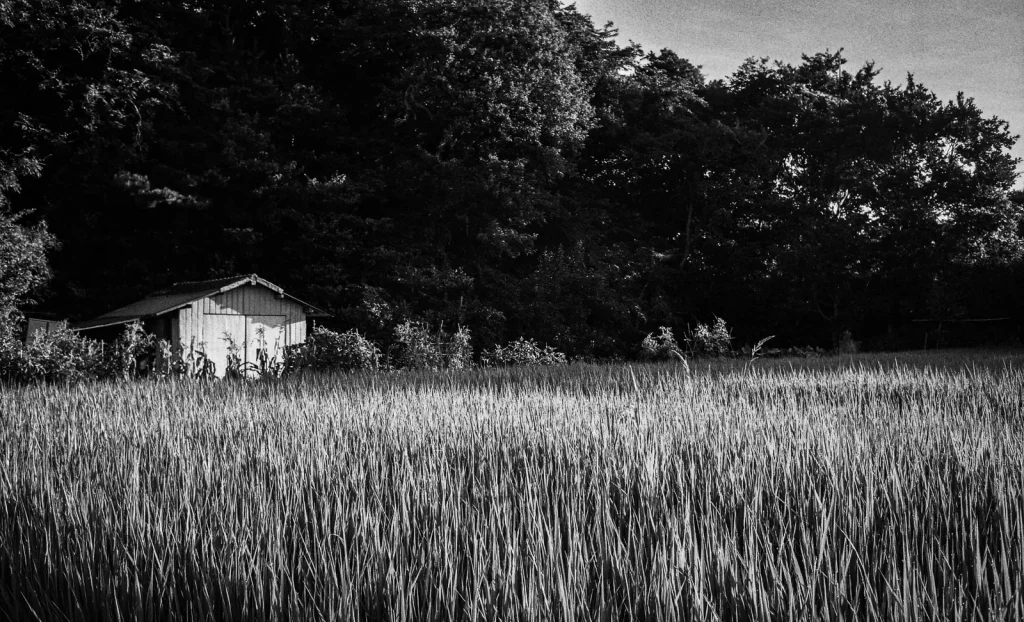
On either side of the lens there is a large nob that you turn in order to make the adjustments. The silver nob adjusts focus, whereas the black nob adjusts aperture. When adjusting aperture, there are haptic clicks at full stops so you don’t necessarily need to look at the front of the lens to know your aperture as long as you keep track of where you started.
The Nikkor 35mm f/2.5 is razor sharp out of water and I suspect underwater too. There is no barrel distortion I can see. The lens itself gives the camera a distinct nautical look, like a porthole on a submersible or the mask on a minion in a Despicable Me movie.
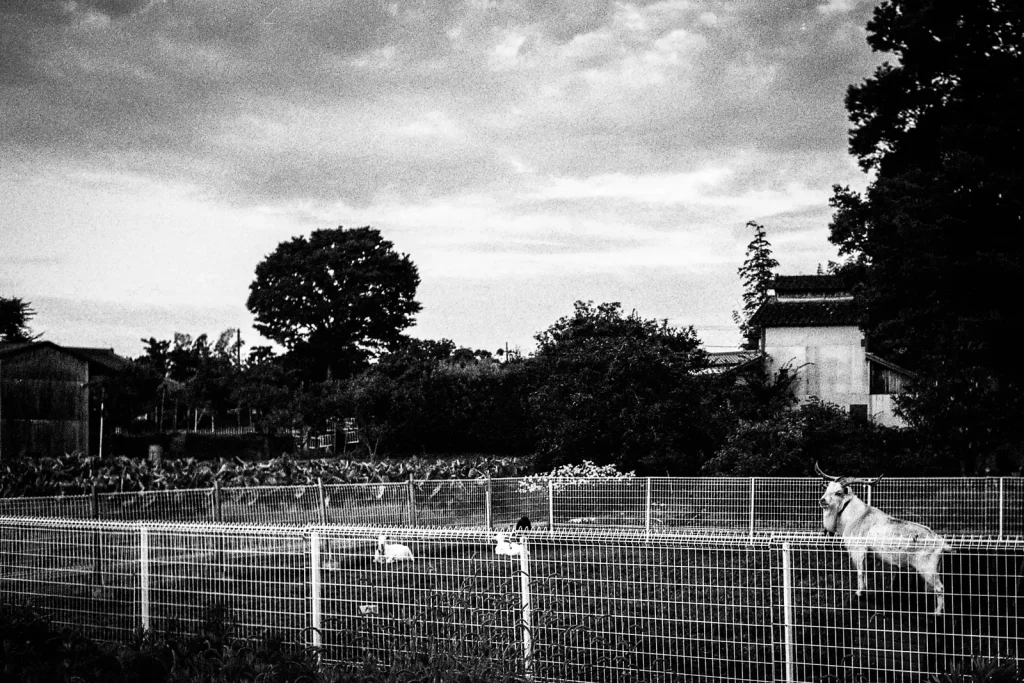
Removing the lens can be a bit perplexing at first. There is no release button. There are notches at the top and bottom of the lens mount that lock it in place when you put it on. To release it, you pull gently on the lens that pulls the two nobs from the notches, and twist. The lens comes off easily. Interestingly, you have your choice as to whether you want to attach the lens with the focus nob on the left and the aperture nob on the right, or the reverse. Whatever you think will make shooting easier for you is fine.
As for shutter speed, you have your choice. There is an aperture priority mode or you can set the shutter speed manually between 1/30th and 1/1000th of a second. The shutter is electronic, but you do have one mechanical option for 1/90th of second should your batteries die. And speaking of batteries, the Nikonos V takes two SR44 or their equivalent.
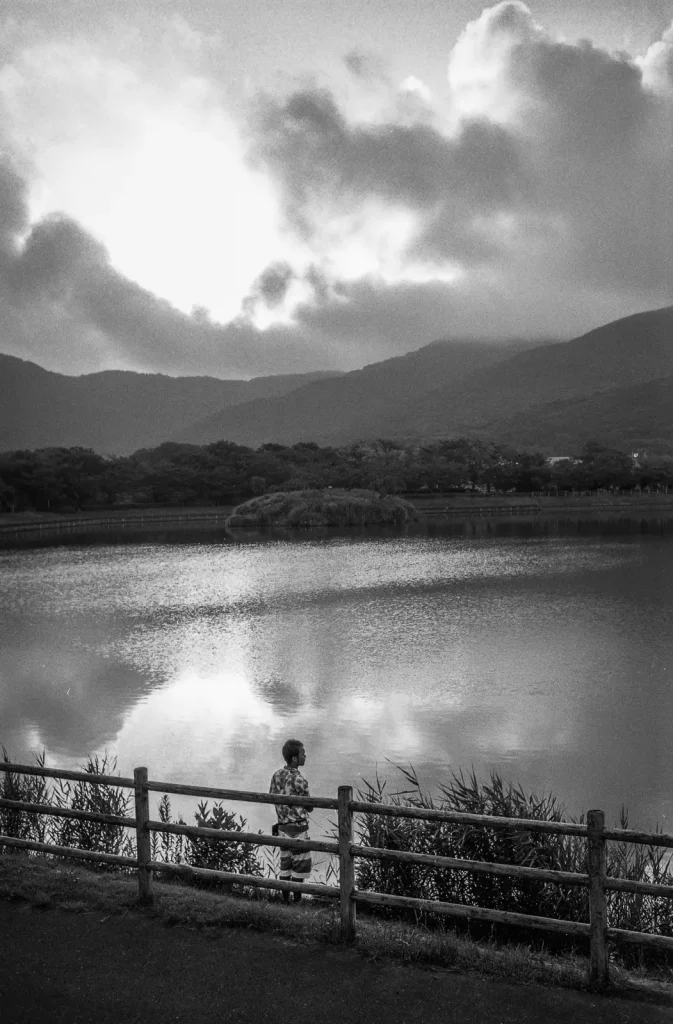
In the Nikonos V finder, there is an LED shutter speed display. You can get a preview of the shutter speed by depressing the shutter release halfway. If you set the shutter speed manually, the display will indicate the speed you chose, but will flash what speed the camera’s meter thinks is best. If your speed exceeds 1/1000th or falls below 1/30th, LED arrow indicators appear. Interestingly, on automatic mode in low light, the shutter speed can drop as slow as several seconds, even though there is no LED indicator for the speed or a manual setting. I have not tested whether or not the camera will do long exposures correctly, but I suspect it will, and I have not tested what the camera’s limit for long exposure is. There is also a bulb mode should you want it.
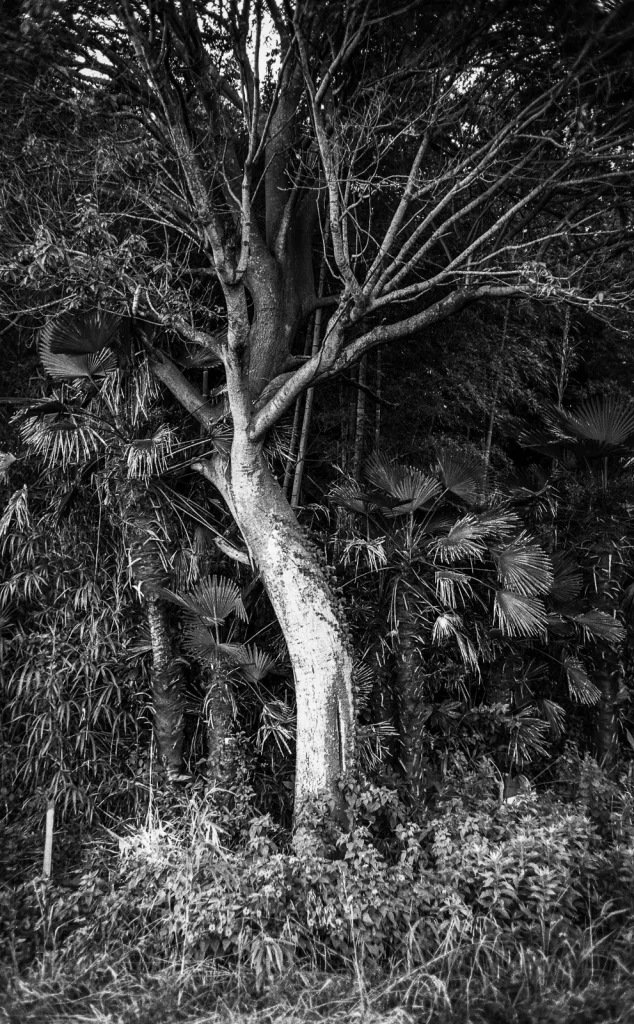
The Nikonos V does have a few quirks. It will not engage the meter until after you have loaded the film and advanced to the first frame on counter. The prior shots are at 1/1500th of a second in auto mode for some reason. I usually get thirty-eight or thirty-nine frames on a thirty-six frame roll of film with other cameras, so why the Nikon designers intended you to throw away perfectly good frames when you don’t have to is beyond me. You can get around this by setting the camera to the mechanical 1/90th speed for the first few shots if you want.
Another quirk is there is no exposure lock, similar to the Minolta CLE, so you will have to set the shutter speed you want manually if it is different from what the meter says in auto mode. The meter appears to be center-weighted, like the Nikon FE, the Minolta CLE, and the Leica M7.
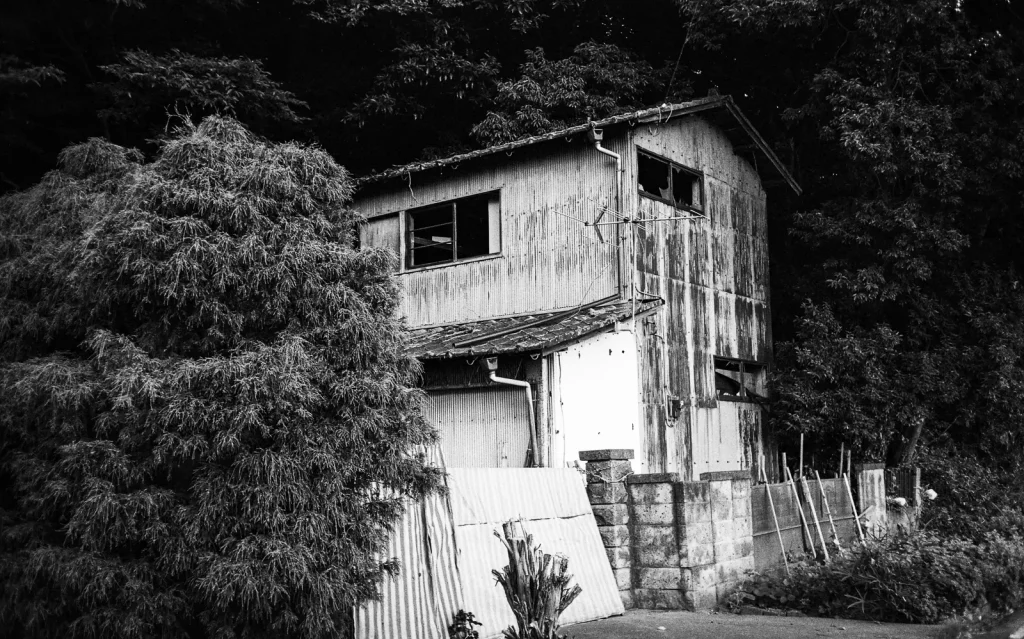
In my view, the Nikonos is a superb all-around camera with the added benefit of being waterproof, and is tough as a tank, as long as zone focusing does not bother you. I zone focus most of the time anyway when shooting with my Leica M3, so this is no big deal to me. However, nailing the focus at f/2.5 is a bit tricky. In any case, I can see travelling with the Nikonos V with few worries. It is fine above water, and ideal for less than camera-friendly environments, like rainstorms, dunes with blowing sand, hiking rough trail up a mountain, nordic skiing, sailing, surfing, or even just splashing around in waves during a beach outing with the kids. And oh yes, it is good even for cycling.
If you are going to buy a Nikonos, there are a few things to consider. First, only the 35mm and 80mm lenses are amphibious. Other focal lengths, and there is quite a selection, work only underwater.
Also, you ought to consider which Nikonos is right for you. Versions I, II, and III are all mechanical, and based on a design developed by French camera manufacturer La Spirotechnique in collaboration with renowned marine biologist Jacques Cousteau. That original camera, made in 1961, was called the Calypso, and you can still find them used, although they are much pricier than the Nikon versions. Nikon bought the rights to the Calypso in 1962, and produced the Nikonos for the mass market. Nikonos aficionados will tell you that the best Nikonos is version III, released in 1975, because of its reliability and improvements that Nikon made over the years on the Calypso design. It has no light meter and no auto mode, so if that puts you off, then the version III is not likely for you. Just an interesting note, some photojournalists covering the Vietnam War from the steaming tropical jungles chose the mechanical Nikonos cameras as tool of choice precisely because of its toughness and watertightness, although I could not find much on this other than an entry in Wikipedia.
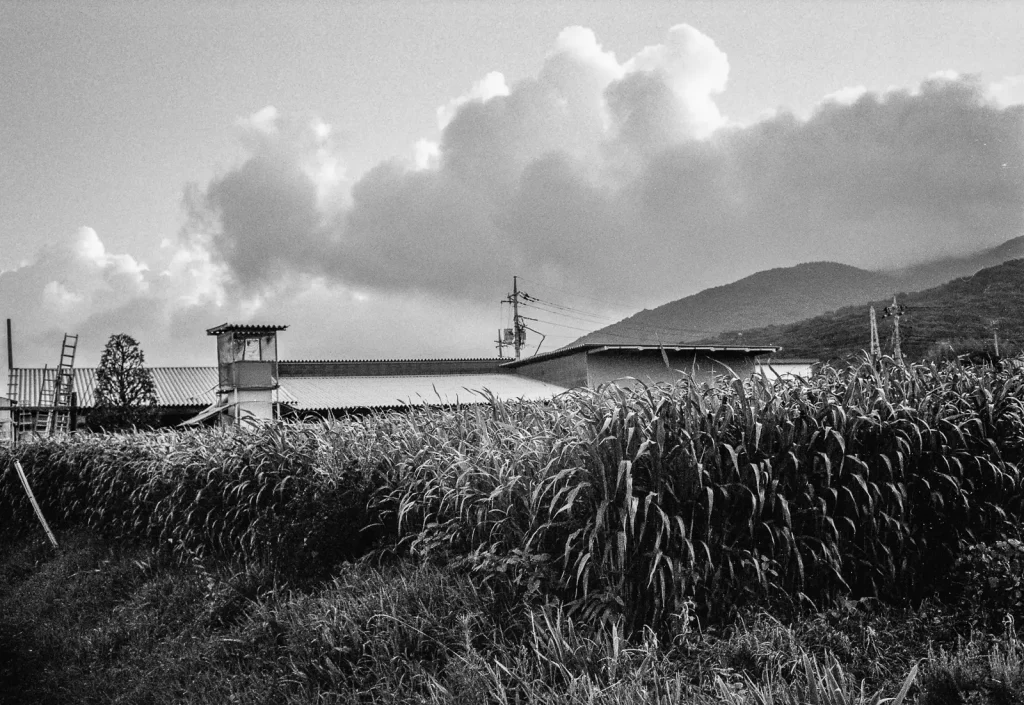
The Nikonos IV-a, released in 1980, was the first electronic version, and is a substantially different design from its predecessors—and has a terrible reputation as unreliable. My first Nikonos purchase was a IV-a, and I returned it two days later because of a flaky light meter. Also, even though the body design is similar to that of the Nikonos V, released in 1984, the Nikonos IV-a auto mode is primitive. You have no LED shutter speed indicators, only a red LED dot that tells you your speed is between 1/30th and 1/1000th of a second. You have to guess shutter speed based on your aperture and ISO setting. There is also no manual shutter speed override, although you do have the mechanical 1/90th option. In my opinion, if you are going to buy an electronic Nikonos, better to go for the Nikonos V. It costs a bit more than the IV-a, but in my view the extra money is worth it.
All Nikonos versions from I through V take the same lenses. I should note that there is also an SLR version of the Nikonos called the RS released in 1992. This camera is a completely different design and takes different lenses. It is substantially more expensive than the mirrorless Nikonos models.
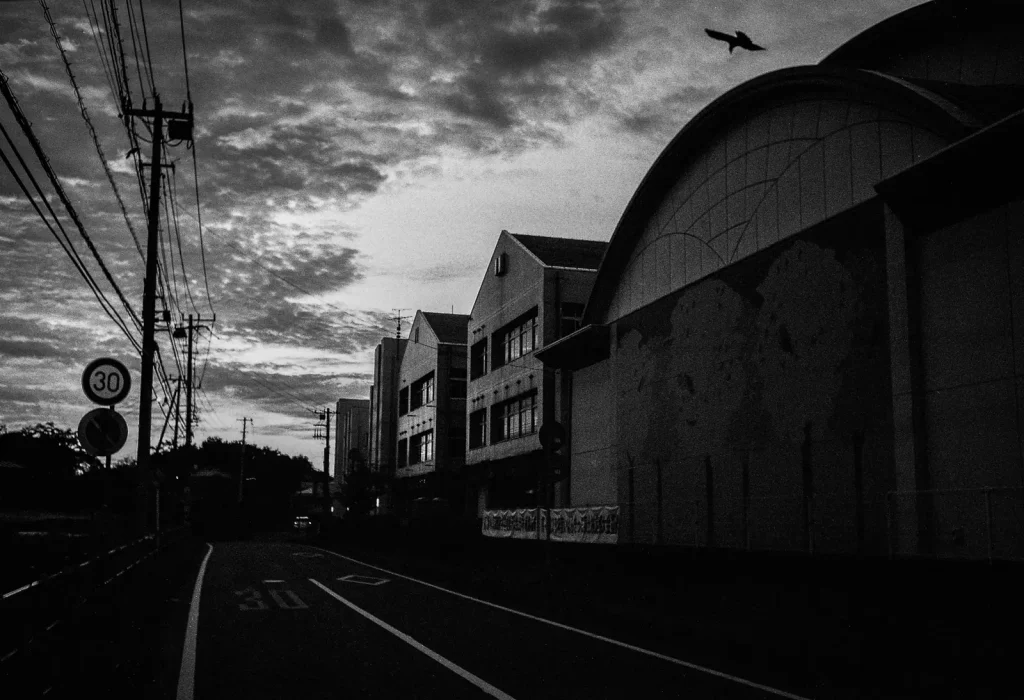
Maintaining the Nikonos and ensuring watertight seals is important, and critical if you plan to use the camera underwater. You need to inspect, lubricate, clean, and replace the gaskets regularly. You can still purchase gasket kits for about four dollars from at Yodobashi camera in Japan, and I suppose they are available elsewhere in the world, but cannot tell you where for sure. There are four gaskets in the kit for the film door, the lens, the battery plug, and the strobe plug as well as a tube of silicon for lubrication. You need to ensure there is no dust on the seal, because it takes only a speck to cause a seal to fail underwater and flood the camera. For the electronic Nikonos versions IV-a and V, that will brick the camera, and the cost to repair it will exceed buying a new one. However, the mechanical versions can be cleaned out and rescued.
And that’s not all! There are also internal gaskets in the camera that a regular user cannot access and must be serviced by a pro. Nikon recommended yearly professional servicing. However, I don’t think Nikon services these cameras anymore. There do seem to be some specialists in Japan, Europe, and the United States who continue to do so.
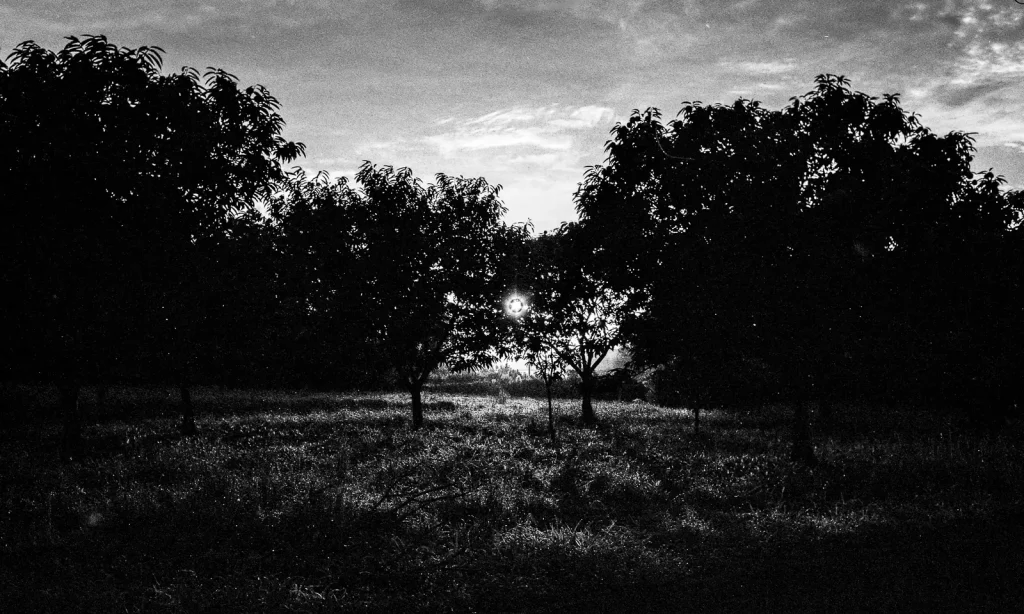
I have not had my camera checked or serviced, but I suspect that even the seals are not in good enough condition for a dive, they are likely good enough to keep the rain out, which is all I care about—at least for now.
I have read online that there is a home-grown process for testing the seals without having to actually put the Nikonos V in water. You heat the camera with a hair dryer with the film door open, and when it is nice and toasty, you close and seal the door. Then you stick the camera in the freezer for a while until it is nicely chilled. Take it out and try to remove the lens. There should be some suction if the camera is sealed. I have not tried this myself, but it sounds like it might work.
The Nikonos V seems to have the makings of a great street photography camera, and I might write about that in another article. My initial foray into the streets of Ginza in Tokyo with the Nikonos V seem promising.
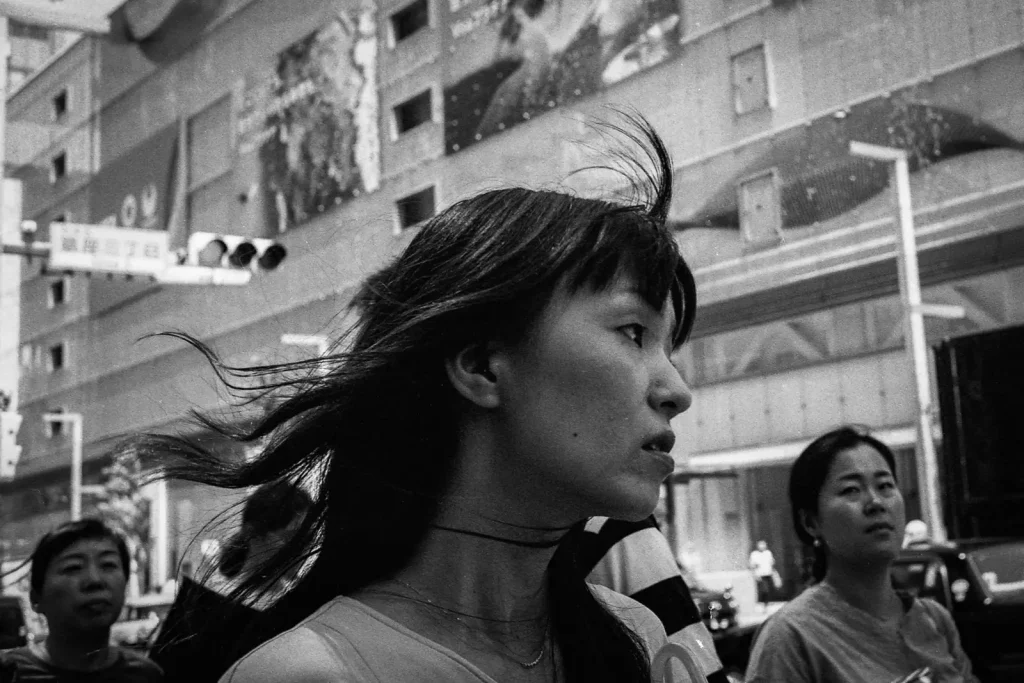
In the meantime, I will pray for rain. At some point, there will be a downpour in Tokyo and I will take the Nikonos V out for a shoot and see how it performs. When I do, I will likely write up a “Five Frames” piece, and post it on 35mmc. For now, I’ll continue to enjoy shooting with the Nikonos V above water and in the sun.
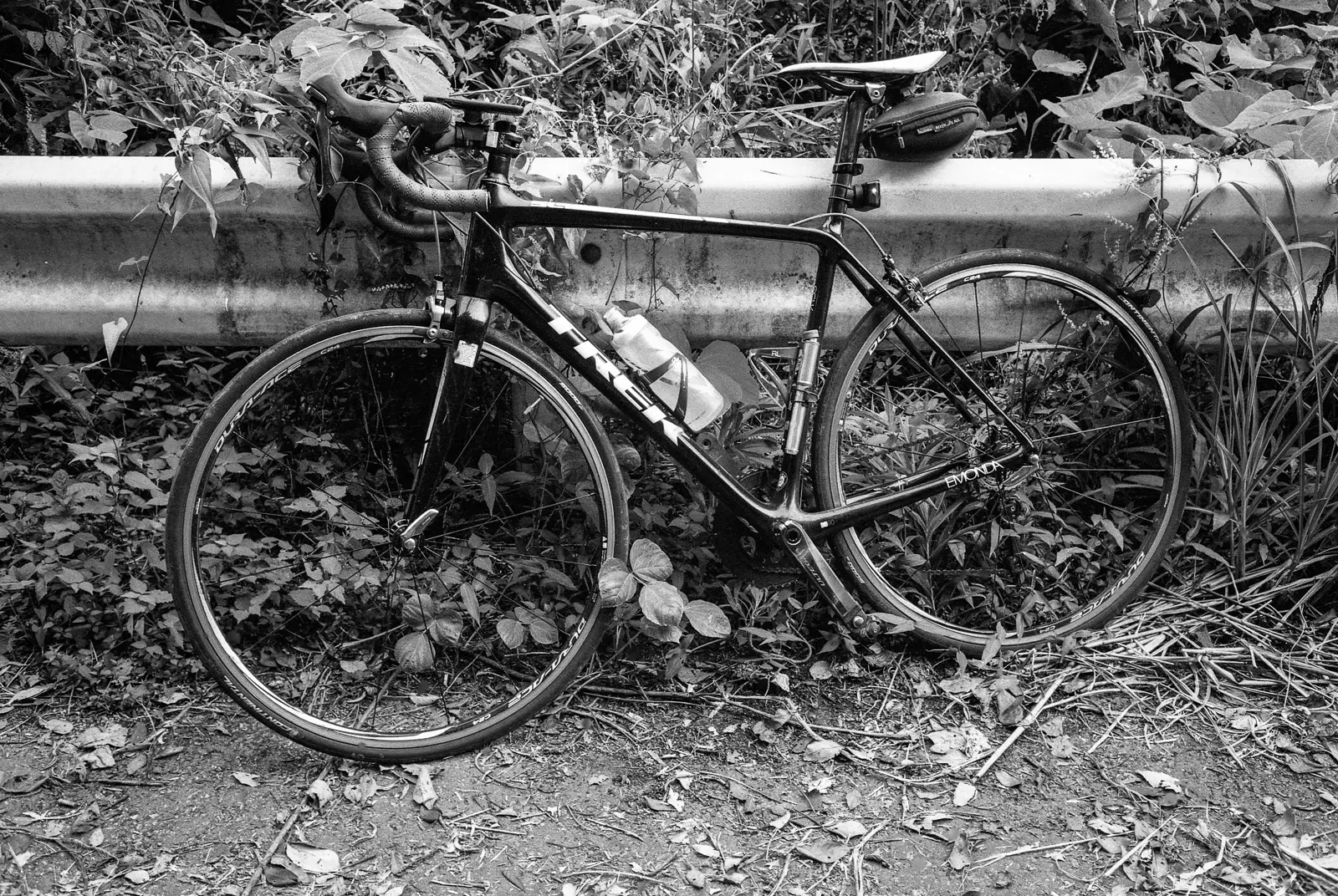
I am a street photographer who lives in Japan. If you would like to see more of my work, have a look at my website bleisteinphoto.com, or my Instagram @sbleistein
There are some other great resources on Nikonos cameras.
Several authors have posted about the Nikonos cameras on 35mmc. Just do a search.
There is a great YouTube overview of all the Nikonos models here. https://youtu.be/qOW8atUBazA
This is a good guide for buying a Nikonos on the Nikonos Project web site. http://www.nikonosproject.com/how-do-i-use-this-camera/2014/9/2/the-nikonos-buyers-guide
There is an interview on Analog Talk with Marine Biologist Megan Barrett who shoots underwater with Nikonos cameras, in which she discusses the different Nikonos models among other things. https://analogtalk.podbean.com/e/megan-barrett-from-meganshootsfilm/
Ken Rockwell has an in-depth review the Nikonos V. https://kenrockwell.com/nikon/nikonos/v.htm
Share this post:
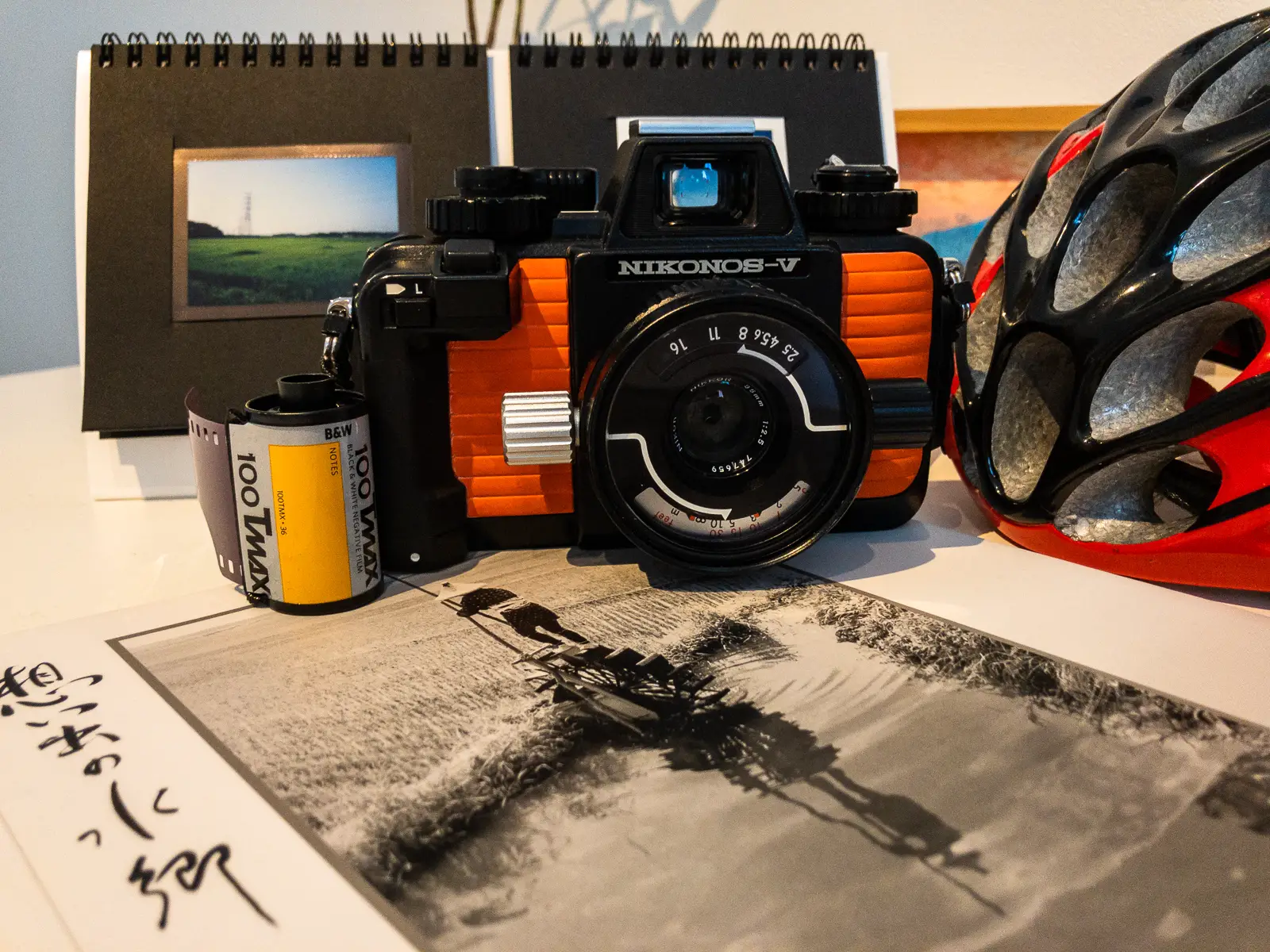








Comments
Pierre-Alix Favillier on Nikonos V Review – Cycling with and shooting on Dry Land – Steven Bleistein
Comment posted: 27/09/2019
I bought one a few months ago and it is now my go to holiday camera/tank.
I also go on a few motorcycles rides a year that span a few days and this is the camera I take all the time for these. It’s basically perfect for anything that might cause you any worries whatsoever. No need to worry about loss, damage, dust, sand, water, the NikonosV can beat it, and it truly takes some amazing pictures.
My zone focusing technique has also dramatically improved as a result. What a lovely invention!
Comment posted: 27/09/2019
thorsten wulff on Nikonos V Review – Cycling with and shooting on Dry Land – Steven Bleistein
Comment posted: 27/09/2019
And I fancy your Trek, what is that for a pump you have there?
Comment posted: 27/09/2019
Yul Vázquez on Nikonos V Review – Cycling with and shooting on Dry Land – Steven Bleistein
Comment posted: 27/09/2019
Comment posted: 27/09/2019
Kevin P. on Nikonos V Review – Cycling with and shooting on Dry Land – Steven Bleistein
Comment posted: 27/09/2019
Louis A. Sousa on Nikonos V Review – Cycling with and shooting on Dry Land – Steven Bleistein
Comment posted: 27/09/2019
eric on Nikonos V Review – Cycling with and shooting on Dry Land – Steven Bleistein
Comment posted: 28/09/2019
Comment posted: 28/09/2019
Evan Bedford on Nikonos V Review – Cycling with and shooting on Dry Land – Steven Bleistein
Comment posted: 28/09/2019
Thanks Steven!
Comment posted: 28/09/2019
martin samm on Nikonos V Review – Cycling with and shooting on Dry Land – Steven Bleistein
Comment posted: 28/09/2019
Richard Richter on Nikonos V Review – Cycling with and shooting on Dry Land – Steven Bleistein
Comment posted: 30/09/2019
Peggy on Nikonos V Review – Cycling with and shooting on Dry Land – Steven Bleistein
Comment posted: 30/09/2019
Huss on Nikonos V Review – Cycling with and shooting on Dry Land – Steven Bleistein
Comment posted: 02/10/2019
stanislaw zolczynski on Nikonos V Review – Cycling with and shooting on Dry Land – Steven Bleistein
Comment posted: 05/11/2019